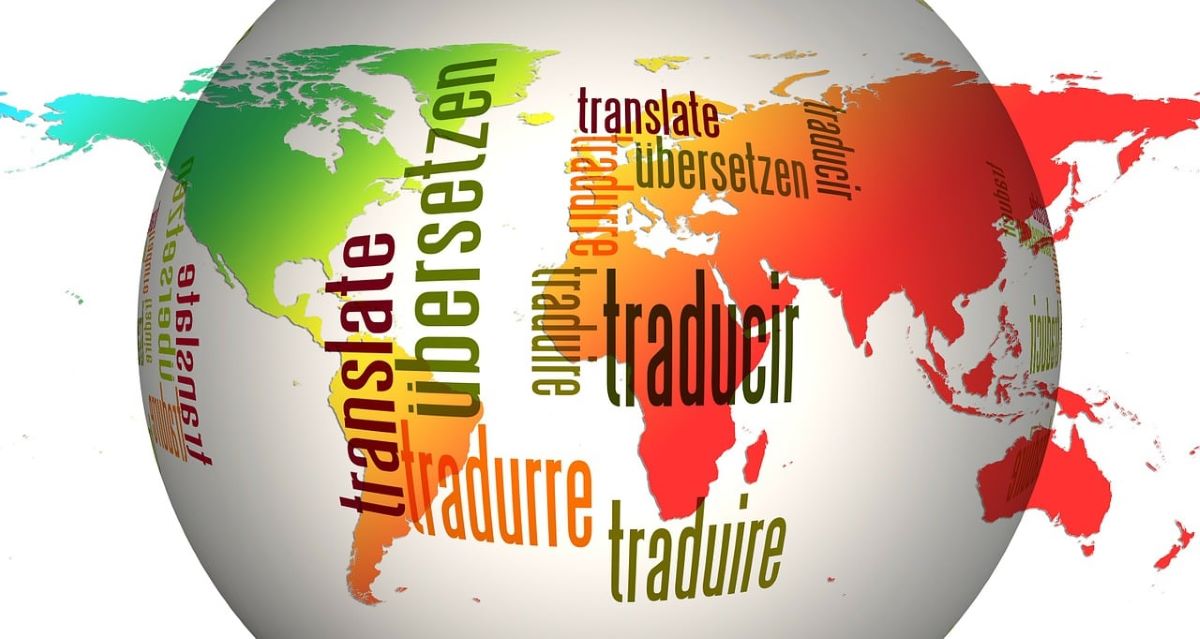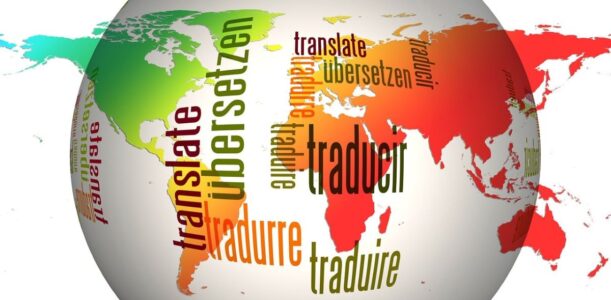Languages are amazing means of communication that reflect the cultures, histories, and unique ways of thinking of the peoples of the world. Some are renowned for their beauty and ease of learning, but there are some languages that pose a real challenge to those who strive to master them. teachersThose who share this passion for languages know that there are languages that require special dedication and perseverance. let's consider top 12 most difficult languages in the world.

1. Íslandský (Icelandic)
Icelandic, although it has a small number of speakers due to the limited population of Iceland, leaves an unforgettable impression on those who dare to experience it. This language is the key to the rich history of the Vikings, sagas and legendary epics that still live in the mythology of the Nordic peoples.
Icelandic is also known for its preservation: thanks to the country's isolation, the language has retained archaic features that were lost in many other Germanic languages. This makes it valuable to linguists interested in the reconstruction of proto-languages and the history of language change.
The phonetic features of Icelandic may seem mysterious and unfamiliar to many language learners. Stress, intonation and sounds can make pronunciation difficult. However, it is these unique characteristics that give the language its melody and enchanting magic.
In addition, Icelandic has its own time system, which differs from the international one. Thus, in Iceland you can find a traditional division of the day into 12 hours, which is often used in everyday life.
So learning Icelandic is more than just mastering the language. This is a journey into the world of age-old traditions, legends and cultural characteristics that capture the heart and mind of everyone who decides to challenge this amazing, albeit complex, language.
2. Chinese (中文)
Chinese, also known as “Han Yu” (汉语) or simply “中文”, attracts attention with its rich history and cultural heritage. It is one of the most popular languages in the world in terms of numbers of speakers and learners, but is also considered one of the most difficult for foreigners to learn.
One of the things that makes Chinese a challenge is its written form. Using hieroglyphs to write words and concepts may seem difficult due to the need to remember a large number of symbols, each of which has its own semantics. Even a basic understanding of writing requires effort and patience.
The tone system of Chinese is another unique characteristic that gives the language its complexity. There are several tones (usually 4, but the number can vary depending on the dialect), and changing the tone can completely change the meaning of a word. This can be confusing, especially for those who are used to languages without such a tone system.
Additionally, Chinese does not have an alphabet like most other languages. Instead, a syllabary system is used, which includes many “ba,” or syllables. This adds difficulty to learning spelling and pronunciation.
But, despite all these difficulties, learning the Chinese language is a magnificent journey into the world of one of the most ancient and powerful cultures. Learning Chinese allows you to discover vast literary and philosophical traditions, as well as delve into the rich history of this amazing country.
3. Finnish (Suomi)
Finnish language, the national language of Finland, is indeed different from many other languages, especially those belonging to the Indo-European family. This makes learning it fun, but also causes some difficulties for those who decide to master it.
One of the key features of Finnish is its grammar. The grammar rules and sentence structure of Finnish can seem complex to those who are used to languages with simpler grammatical structures. For example, in Finnish, words can have many cases, which determine their role in a sentence, as well as many verb conjugations and noun inflections.
In addition, the Finnish language does not have gender forms (masculine, feminine, neuter), which distinguishes it from many other languages. Finnish instead uses a distinction between living and inanimate beings, which may seem unusual to foreigners.
However, despite its difficulties, the Finnish language has its own unique beauty and depth. Learning this language opens up opportunities for you to immerse yourself in Finland's rich culture and literature. Understanding Finnish can also create an incredible connection with the locals and allow you to immerse yourself in the true atmosphere of this amazing country, revealing its secrets and magic.
4. Греческий (Greek)
Greek language, inextricably linked with ancient history and culture, is a source of inspiration for many. It sounds majestic and is replete with a variety of dialects, each with its own characteristics. However, despite its beauty and significance, Greek can pose a real challenge to those who seek to learn it.
Greek grammar is an art in itself. It is rich and complex, with many rules and features that can confuse even experienced linguists. The excellent case system, sentence constructions, multiple tenses and verb conjugations can all be a challenge for beginners.
Greek dialects can also be confusing. The variety of regional differences in pronunciation, vocabulary and grammar can make communicating in different parts of Greece a little more difficult than expected. Even locals may have difficulty understanding different dialects.
The pronunciation features of Greek may be unusual for speakers of other languages. The same letters in different words can sound completely different, which can create confusion. Also, Greek has a rich sound system, including sounds that may not be entirely familiar.
However, all these difficulties are worth overcoming. Studying the Greek language allows you to discover a treasury of world literature and philosophy. This is a chance to penetrate the world of ancient mythology, the history of great civilizations and the heritage of great minds. Speaking Greek broadens your horizons and enriches your view of the world.
5. Арабский (Arabic)
Arabic is a treasure trove of cultural heritage, the language of the Quran and many great literary works, but its complexities can be a real challenge for those who decide to explore its depths.
Arabic grammar is a labyrinth of rules and structures. The system of changing a word depending on case, tense, gender and person requires careful practice from language learners. However, it is precisely this grammatical complexity that makes Arabic so precise and expressive.
The variety of Arabic dialects also adds complexity. Words, phrases and pronunciation may vary significantly between Arab countries. Even experienced Arabic speakers can have difficulty understanding different dialects, especially if they were born and raised in a different region.
Writing Arabic is a real challenge for beginners. The Arabic alphabet, known as “abjad,” uses Arabic letters with its own writing characteristics. Some letters have different shapes at the beginning, middle and end of a word, which makes writing Arabic unique and unfamiliar to most people.
It is a language that unites millions of people around the world, and knowledge of Arabic can help in communicating with native speakers of this language, understanding their cultural values and worldview. Despite its challenges, Arabic can be a wonderful and inspiring enrichment for your linguistic courage and cultural literacy.
6. Hungarian (Magyar)
Hungarian, the official language of Hungary, surprises with its uniqueness and complexity. It belongs to the Finno-Ugric language family and is in the same group as Finnish and Estonian. This distinguishes it from most other languages that belong to the Indo-European language family.
The Hungarian language has made a huge contribution to world culture. It is the language of many great writers and poets. The works of Hungarian authors have been translated into many languages and are known for their depth and originality. Hungarian folk tales have become especially famous, conveying the spirit of the nation and its national identity.
The Hungarian language has a rich history, and it has been influenced by the various cultures and empires that have influenced Hungary over the centuries. This is reflected in the language's lexicon, which contains elements from Germanic, Slavic and Turkic languages that have contributed to this unique linguistic ensemble.
Hungarian grammar can also seem difficult to untrained ears. It includes a rich system of declensions that determine the endings of words depending on the role of the word in the sentence. The Hungarian language is also known for its wealth of suffixes and prefixes, which can change the meaning of a word.
Immersion in this musical language will reveal not only the linguistic harmony, but also the cultural heritage that Hungary is proud to present to the world. Through perseverance and perseverance, you will be able to discover the secrets of Hungarian literature, music and art, and perhaps even make new friends among the hospitable Hungarians.
7. Japanese (日本語)
Japanese is a real linguistic uniqueness that has unique writing systems, alphabet and grammar. It can seem intriguing and at the same time a challenge for those who decide to master this amazing language.
The Japanese writing system has three main components: characters (kanji), hiragana and katakana. Kanji are ideograms, each of which represents not only a phonetic meaning, but also a semantic component. Hiragana and katakana are syllabaries used to write the phonetic parts of Japanese words, and are usually used to write the grammatical endings and expressions of foreign words.
In addition, there is a phonetic script called romaji, which uses English letters to represent the sounds of the Japanese language. It may be convenient for foreigners in the early stages of learning, but mastering kanji and alphabets is nonetheless an important part of fully understanding Japanese.
The grammar of Japanese is also different from most Indo-European languages. It is based on important concepts about subject, object and time, but sometimes produces expressions that may seem unusual and mysterious to beginners.
However, the effort you put into mastering Japanese will definitely pay off. This language gives you access to the rich Japanese culture, history, literature and art. You will be able to immerse yourself in the world of great masters of cinema, literary masterpieces, calligraphy and traditional Japanese cuisine. Learning Japanese can be an exciting journey into the unique world of the Land of the Rising Sun.
8. Turkish (Türkçe)
Turkish language, the national language of Turkey, has richness and depth. Its agglutinative structure is one of the most interesting and at the same time challenging characteristics. This unique feature allows you to create complex word forms by adding prefixes and suffixes to the root word.
In Turkish, grammar plays a vital role. Correct sentence formation depends on the precise use of suffixes that reflect the word's role in the sentence, tense, case, and many other grammatical aspects. But it is precisely thanks to this agglutinative structure of the Turkish language that shades of meaning can be accurately expressed and sentences created precisely and clearly.
For many Turkish language learners, this is the aspect that may seem difficult in the initial stages. But with persistence and practice, understanding grammar becomes more natural. Learning the rules and structures of Turkish will allow you to immerse yourself deeper into this amazing culture, literature, music and communication with friendly Turks.
Knowledge of Turkish will open the doors to the wonderful world of Turkey and Turkish-speaking countries. You will be able to understand people's native language, share your thoughts with them, and learn more about their culture and customs. Learning Turkish is not only an intellectual enrichment, but also a great way to broaden your horizons, enrich your life experiences and create new connections with friendly people.
9. Korean (한국어)
Korean, one of the most interesting and colorful Asian languages, does have unique features that may pose some challenges for foreigners.
One of the most prominent features of the Korean language is its writing system, Hangul. It is an alphabet with a phonetic nature, designed to be easy to read and learn quickly. However, in practice, especially at more advanced levels, Hangul can become complex due to its rich system of sounds and graphic elements.
Korean grammar also has its own characteristics that may not be immediately clear to beginners. It relies on unique principles for the use of endings, word order in sentences, and the way forms are formed. Additionally, the level of politeness in Korean is an important aspect that can create difficulties when communicating with different social groups.
However, with careful study and perseverance, understanding the Korean language is possible and rewarding. It opens up a world of rich Korean culture, art, literature and cinema. Knowing Korean will also make it easier for you to interact with Korean friends, colleagues and business partners, and allow you to appreciate their customs and manners.
Learning the Korean language is not only a key to linguistic diversity, but also a chance to enjoy the beauty and richness of the language, which is an important part of Korea's cultural heritage.
10. Polish (Polski)
Polish language, the national language of Poland, does have some peculiarities that may pose a slight challenge to its learners.
The grammar in Polish is quite complex. It is important to understand the rules for declension of nouns, adjectives and verbs, as well as the different tenses and modes of verbs. This may require careful practice to learn how to form and analyze word forms correctly.
Declensions are another feature of Polish that can be confusing. Nouns and adjectives change their forms depending on case, number and gender, which adds additional complexity when forming sentences.
Complex sentence structure can also cause some confusion. Polish uses a specific word order to express certain relationships between the elements of a sentence. This may differ from word order in other languages and may take some getting used to.
However, despite these difficulties, the Polish language is an important key to understanding Polish culture, history and communication with Polish speakers. It opens up opportunities for you to connect with Polish friends, understand and enjoy Polish literature and cinema, and immerse yourself in the rich history of this amazing country. Learning Polish can be challenging, but it is also a reliable way to enrich your cultural experience and broaden your horizons.
11. Грузинский (Georgian)
Georgian language is a true linguistic jewel reflecting the rich history and culture of Georgia. Its unique structure and grammar may indeed pose some challenges for those used to more standard languages.
One of the most interesting features of the Georgian language is its agglutinative grammar. Georgian uses many affixes and suffixes to form different forms of words. This may require careful study and understanding of the context to correctly interpret the meanings.
The Georgian language is also famous for its phonetic features. The pronunciation of some sounds may seem unusual to speakers of other languages, and it may take time and persistence to acquire the correct pronunciation.
The sentence structure in Georgian can also be confusing for those not used to this word order. Georgian generally has a flexible structure, allowing the order of words in a sentence to be changed to emphasize certain elements.
Mastering Georgian will open doors for you to communicate with Georgians, understand their thoughts and feelings, and help you enjoy this unique language, which is an integral part of the spirit of Georgia.
12. Аймара (English)
Aymara, the language of the Andean Indians, is indeed an incredibly interesting but also complex language. Its complex morphology and grammar make it unique and pose some challenges for those who decide to dive into its study.
Aymara remains an understudied language among the world's languages, which adds even more complexity. The limited number of resources and materials in Aymara makes it more difficult to learn, and students may face limitations in finding information and learning materials.
Aymara grammar also presents its own difficulties. There are various forms and endings in language that indicate cases, gender, number and other grammatical categories. This can be difficult to understand, especially for those who have no experience with languages with similar structures.
However, learning Aymara is a fascinating and educational process. This language is key to understanding the culture and history of the Andean Indians, and can give you a unique perspective on the world. You will be able to communicate with Aymara speakers, learn about their customs, traditions and worldview, and also immerse yourself in the atmosphere of this amazing part of the world.
Although learning Aymara can be challenging, it will also allow you to expand your linguistic experience, enrich your cultural background, and create valuable connections with the Andean Indians.
So, if you decide to master one of these amazing yet challenging languages, be prepared for rigorous grammar study, practice, and a lot of persistence. It may be a great challenge, but the confidence you will gain and the horizons that will open up will be worth every effort. Once you master such a language, you will be immersed in a new world of cultural riches and unique ways of thinking, which will certainly enrich your life experiences.







